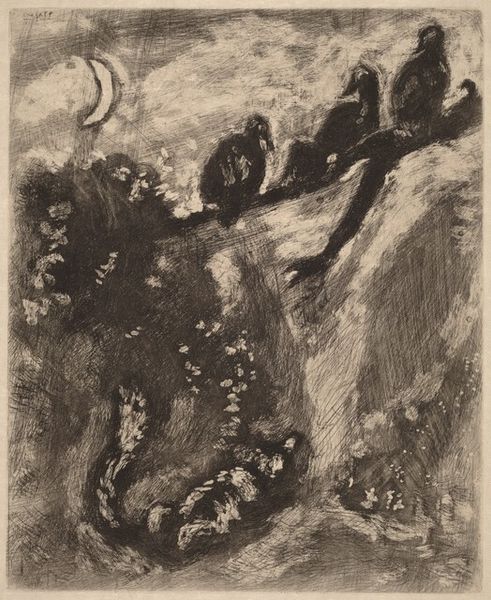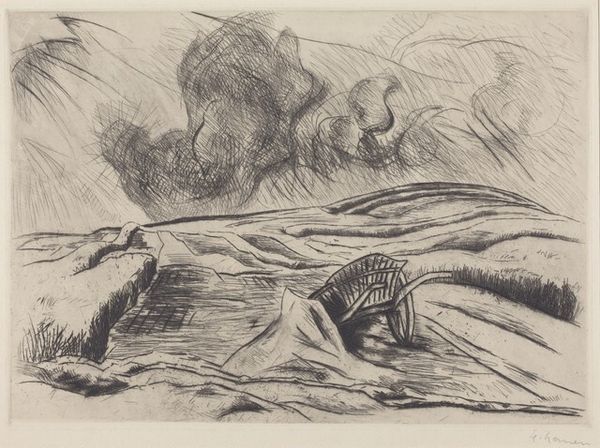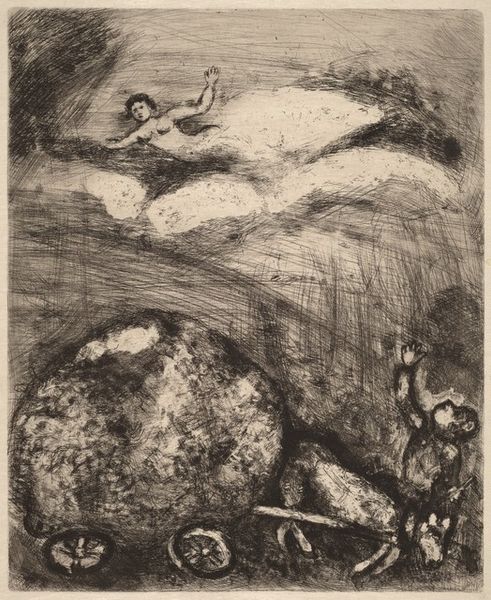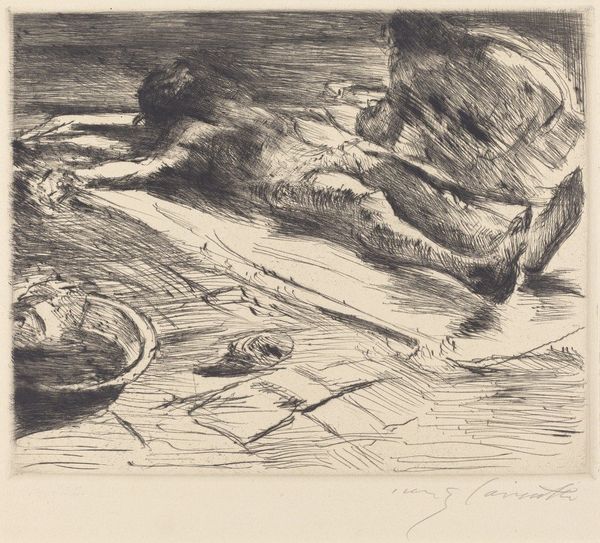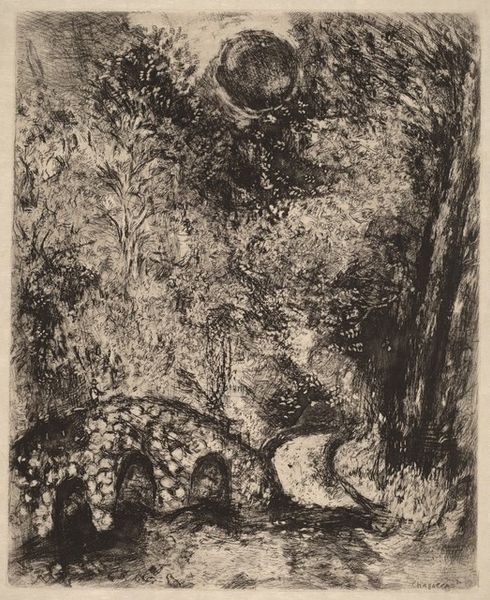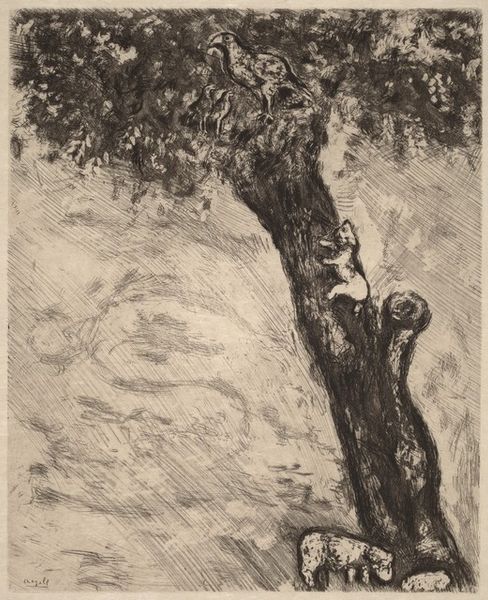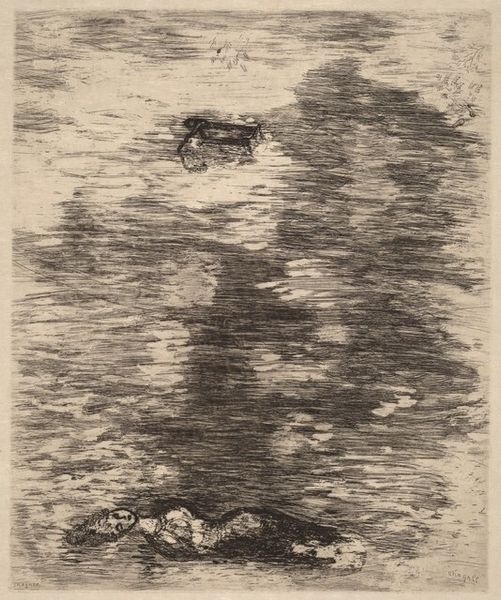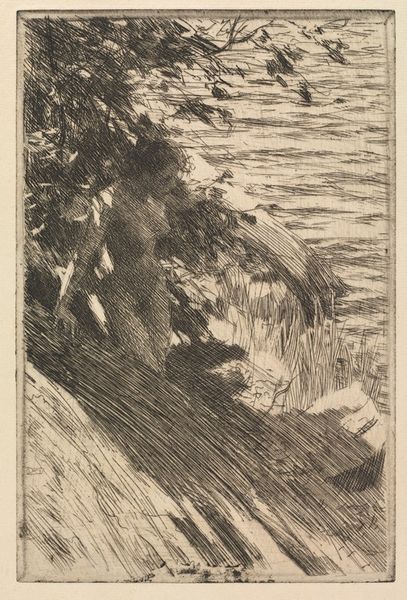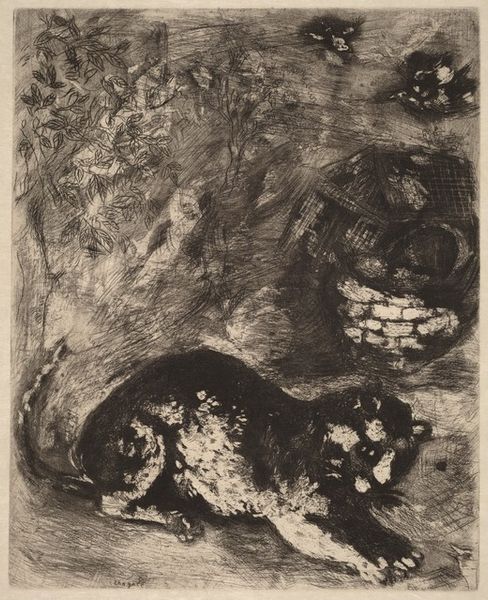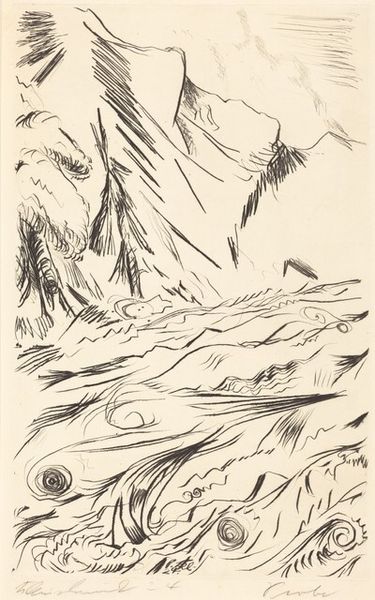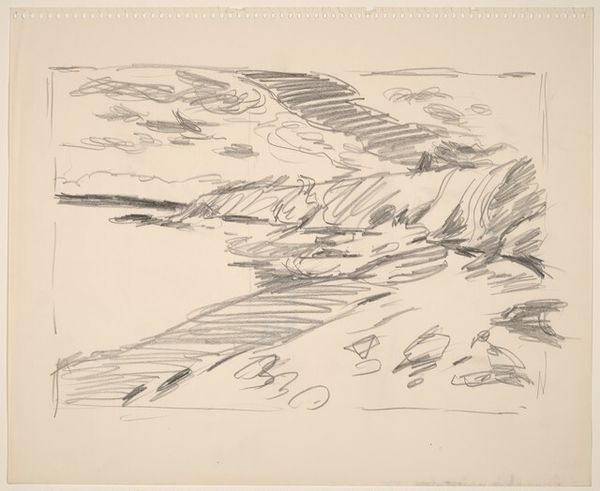
Copyright: National Gallery of Art: CC0 1.0
Curator: Looking at Marc Chagall's print "The Wolf Turned Shepherd", executed sometime between 1927 and 1930, my initial sense is one of impending darkness. There's a definite brooding quality about the piece. Editor: Yes, a real tension is created in the print! Here, we are looking at an etching; notice the expressive cross-hatching to conjure the stormy skies above. Consider Chagall's wider relationship to social and political concerns – the looming wolf taking center stage certainly introduces an unsettling mood to the landscape. Curator: Indeed, and Chagall frequently explores this theme of metamorphosis and duality. The wolf, a traditional symbol of predator and danger, is juxtaposed with the role of shepherd – usually someone who serves as a protective guardian. He’s taking on the staff himself, the wolf, so there is obviously some symbolism there. Is the wolf actually changing, or just acting? Editor: Precisely! That very question underlines much of Chagall's socio-political commentary during this period. Think of the shifting allegiances across Europe during this time frame! This print encapsulates a profound disquiet. The ambiguity makes us ponder the motivations and true nature of authority. The sheep at the top also look very huddled and indistinct; there isn't any visual suggestion of the traditional role of the shepherd: protector of his flock. Curator: Also the wolf himself: half skulking monster, and half man – not exactly upright but almost transformed. This tension between instinct and assumed responsibility is such an enduring symbol for Chagall. Editor: I agree, there’s that enduring push-and-pull throughout. Chagall created this in a period rife with anxiety, but those feelings speak profoundly to modern audiences as well. We still grapple with understanding the potential for radical changes in leadership and the nature of trust itself. Curator: I think what strikes me most is that he uses such familiar imagery – shepherd, sheep, and wolf – but the emotional impact is profoundly strange, unnerving even, due to this shift of the expected roles. Editor: Absolutely, Chagall takes traditional allegories and imbues them with raw, anxious humanity. I see a stark warning. Curator: Well, this etching leaves one with much to ponder indeed.
Comments
No comments
Be the first to comment and join the conversation on the ultimate creative platform.
